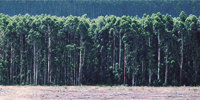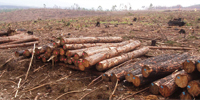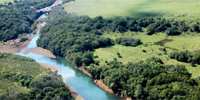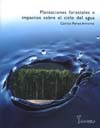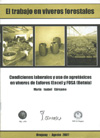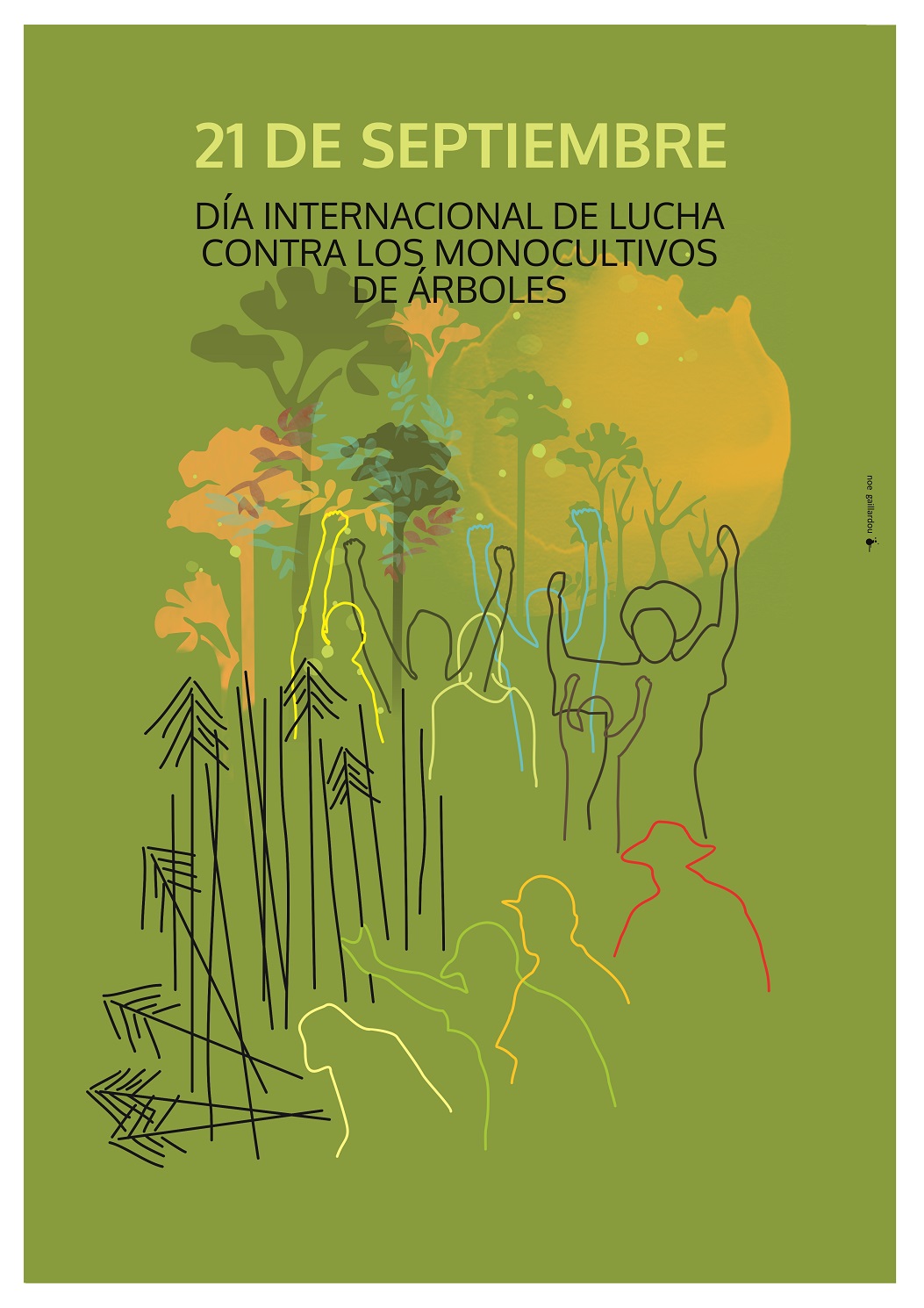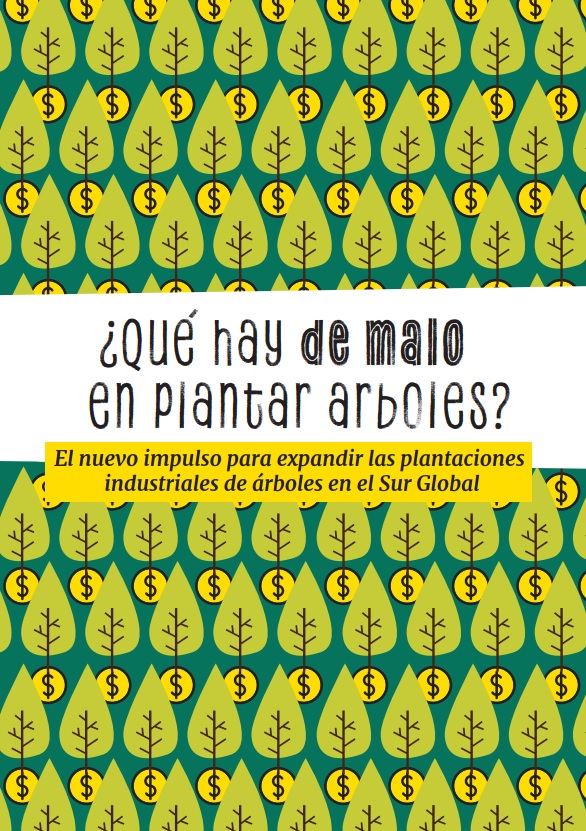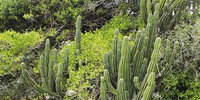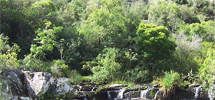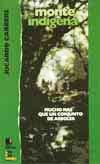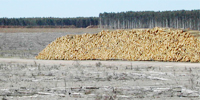The discussion of environmental issues necessarily includes political and technical arguments. For the past year and from this perspective, a group of Uruguayan scientists has been trying to contribute with inputs to the debate on this productive model.
by Victor L. Bacchetta
Professor Daniel Panario (Master in Environmental Science and director of the Epigenesis Science Unit), the Biologist Alice Altesor (Department of Ecology) and the Agronomy Engineer, Ricardo Cayssials (Department of Geology), three research workers, were among the authors of the Faculty of Science report “Synthesis of the environmental effects of the pulp mills and the forestry model on Uruguay.” A little over a year since it was made public, Brecha talked to these scientists to try to make a first assessment of what has been done so far.
On the basis of your scientific activity you worked to get to know the impacts of the on-going forestry model and to submit them to discussion by Uruguayan society. The process continues, but what has been achieved so far?
Daniel Panario: The first FAO report recommending forestation goes back to the fifties, then in the eighties came the JICA (Japanese International Cooperation Agency) report, and finally the World Bank plan. This policy, starting under President Julio María Sanguinetti and continuing under President Luis Alberto Lacalle, is not a State policy but a World Bank (WB) policy and a policy of the corporations guiding it. Our first work was carried out in the nineties, with CIEDUR. A book was published that had considerable repercussions, there was political opposition and a certain balance was established. When the Frente Amplio (FA) party took up office, the forestry model was intensified, despite the fact that the Programme Commission had many reservations about it. Now it is clear that the FA accepts WB policy.
Ricardo Cayssials: I had to deal with the press when we made public the Faculty report. The attitude of the journalists was almost incredible, as if we were anti-patriotic, although we were only complying with a mandate of the Council, in accordance with the attributions of the University, to prepare a technical opinion on the issue. I would like to put on record that a few days after the environmental authorities of this government had taken up office we approached them on the need to generate a dialogue, telling them that the University could be a forum for this discussion. However they informed us that it was too late. Perhaps they had political elements, but it is never too late to start this dialogue. It is essential to start a dialogue as soon as possible, to reason, so that general interest is taken into consideration. The key is, on the one hand to have a good scientific basis, which is lacking so far and, on the other, to have the participation of all those involved.
Alice Altesor: In fact, there has been no debate based on well-founded arguments. The discussion has been taken to a ground where arguments have been simplified. It has been taken along completely “black and white” paths to see things in terms of patriotism, employment yes or employment no, the advisability or not of foreign investors coming and the country developing. We are told that we, as scientists, can only have an opinion on technical aspects. But this is neither a merely scientific nor a merely political discussion. To make a separation of this kind regarding environmental issues goes against the very nature of an environmental problem itself. Scientific evidence is an input for political decision.
Over the past five years, the sale of lands confirm that they may well reach the maximum area of so-called “lands appropriate for forestry” (some 4 million hectares), but these are not the only lands that have been given over to monoculture tree plantations so far.
D.P.: It is highly probable that this is the case. But this government has shown itself to be sensitive to public opinion, for example regarding issues such as Never Again or the Free Trade Agreement. This is why, if a very strong opinion is generated, we have the hope that the government will be sensitive to it. I think that at the level of the population, much progress has been made. After all, in the nineties when we started working, we ourselves thought that this had no impact. And we were far from the extent of the areas that are now under plantation. Presently, there is a national debate, mainly at the level of farmers. There are sectors that are really very concerned, more when you are aware that this implies irreversible changes in the soil, that the land is considerably degraded.
R.C.: It seems to us all that it is essential and urgent to make the most objective assessment possible of the successes and errors of this forestation model. This implies organizing the necessary multidisciplinary teams, using all available technology (satellite information, geographic information systems, among others) carrying out the field work and essential laboratory tests, working with the people, with the inhabitants that have benefited or lost out with this model. Finally, it implies making an environmental assessment of the successes and errors of this forestry development and generating a prospective response to define how to continue from here on. The worst would be to continue with things as they are and not realise that there are many things where we have made mistakes.
A.A.: Today they are no longer small plantations scattered over the grasslands matrix, they are vast tracts of land, even at the heads of catchment basins (such as those of the Rivers Santa Lucía, Rocha and Tacuarembó) where the impact on the water cycle is much more pronounced. It is said that the percentage of land under forestation is minimum. But the analysis should be made at the scale of catchment basins, which is that of ecosystem functioning. The results then become dramatic. It doesn’t matter that we have 6 or 7 percent of the national area under forestation, the problem is that we have 90 or 100 percent of the catchment areas, and the fundamental catchment areas. This will even affect the generation of electric energy. Who has studied the impact of forestation in the Río Tacuarembó or Río Negro catchment areas on supply to the hydroelectric dams?
Botnia has announced the start of its operations and the government has announced the possibility of two more pulp mills of a similar size. How do you assess this prospect?
D.P.: For me it is a conflict that is just starting. As I have taken part in several, I have seen some that are low key that go on and on and then die. For example that of the Eastern Wetlands, there are few people involved and they do not manage to unite in their protest, but here things are different. I think the conflict will continue and it will grow bigger. Of course, Botnia has already had a cost and will continue costing. If it starts to transcend that risks can continue, its stocks may start coming down. ENCE is looking to see what goes on with Botnia, the other companies that may come to install themselves here are also observing. Social processes are imperceptible but there comes a time when they may explode. It would seem that the Frente Amplio government that applied these procedures all its life can no longer perceive what is going on.
A.A.: We can provide the discussion with a conceptual framework in which to set out environmental conflicts. Any transformation of land use causes positive or negative changes on assets and services provided by the ecosystem. The assets that we normally know are those that have a market value: meat, milk, wool, timber, leather, etc. These are followed by those that, although they do not have a market value, have an enormous value such as maintaining the water cycle, climate, soil, biodiversity, together with others that are linked to cultural processes (existence, recreation, landscape values). Societies must ask themselves how to manage resources, how to strike a balance to make sustainable productive projects.
R.C.: In the recent constitutional reform on water, the Uruguayan public defined, with total clarity that this is not a merchandise to be bought and sold. This means that these values are present in Uruguayan culture. The whole world knows that biodiversity, water and the earth have no price. Our suggestion is not a harebrained one, it is present in all countries, it has to do with environmental land planning. The key to human survival lies in knowing how to link the various uses of the terrestrial and aquatic spaces of our small cosmic craft: Planet Earth.
* This note is part of a series of interviews that the author carried out with representatives of NGOs and various research workers in the framework of the imminent launching of the Botnia plant. The interview was published in the Uruguayan weekly newspaper “Brecha”, 3 August, 2007 – http://www.brecha.com.uy

